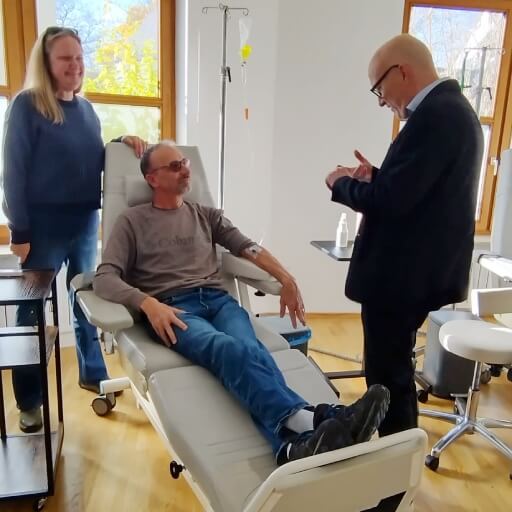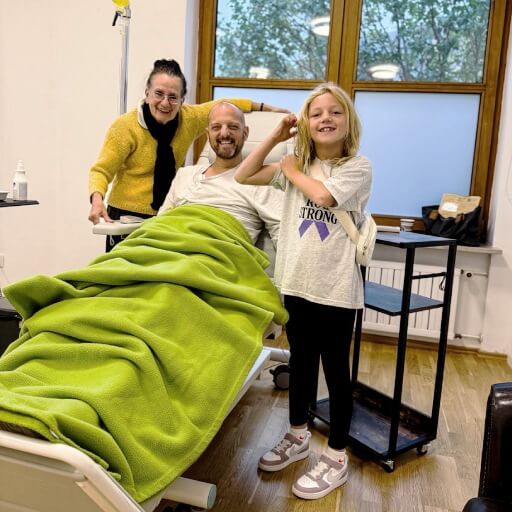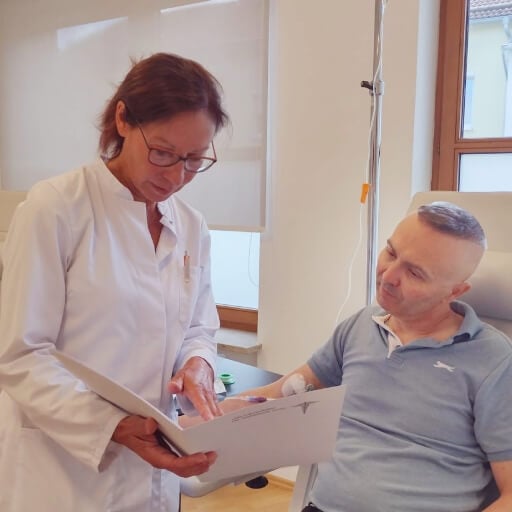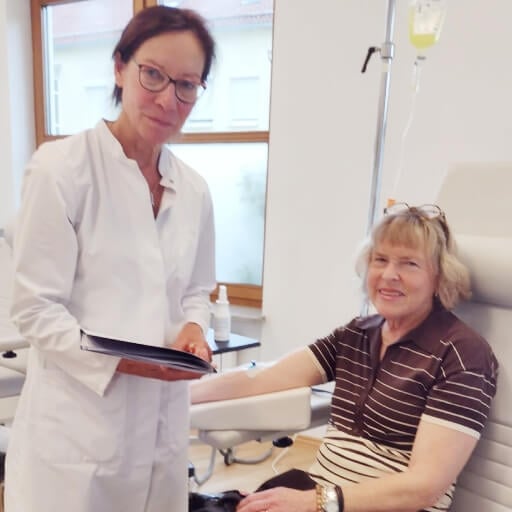Prostate cancer (PCa) is one of the most common malignancies in the world and the cause of a significant proportion of all cancer deaths [1, 2]. An understanding of the epidemiology and risk factors of the disease is important since they each relate directly to therapeutic strategies and outcomes of prostate cancer. Theіr knowledge should be used in the treatment and prevention. Age, race, family history, and genetic mutations are non-modifiable risk factors for PCa. The metabolic syndrome, obesity and smoking are considered modifiable risk factors [3]. Most newly diagnosed prostate tumors are localized, and early detection is crucial for achieving complete cancer control while preserving urinary and erectile function. Prostate cancer is the most commonly diagnosed malignancy among men in more than half of the world’s countries (112 of 185, according to global statistics). An estimated 1.4 million new cases were reported worldwide in 2020 [4].
In the last few years, medical advances have revolutionized the approach to the management of patients with prostate cancer. These advances have led to the development of new minimally invasive therapies designed to kill prostate cancer cells while preserving normal tissue and vital structures. Among these advances is the development of focal therapy, and particularly irreversible electroporation IRE using the NanoKnife® system, which has attracted great attention as a safe and effective minimally invasive outpatient procedure for the management of prostate cancer.
Understanding Prostate Cancer
Prostate cancer is a highly diverse and multifaceted disease that develops in the prostate tissue, a small gland located beneath the bladder. While most cases of prostate cancer are indolent, it remains one of the leading causes of cancer-related morbidity and mortality in men. To effectively treat prostate cancer and to develop new minimally invasive therapy, such as the NanoKnife (IRE) system, we need to better understand the mechanisms by which prostate cancer cells grow and metastasize.
What Is Prostate Cancer
Prostate cancer occurs when prostate cells (glandular) that are normally functioning begin to develop into malignant cells and continue to grow in an uncontrolled manner. The early stages of prostate cancer remain localized within the prostate itself and are termed "localized prostate cancer". In this localized stage, focal therapy enables selective ablation of prostate cells, preserving all non-cancerous prostate tissue.
If left untreated or if the initial treatment is ineffective, the disease will progress outside the confines of the prostate and invade the seminal vesicles, lymph nodes, and/ or distant organs. This represents the progression of localized prostate cancer to advanced prostate cancer and indicates that more aggressive forms of therapy, such as radical prostatectomy and external beam radiation therapy, would be required. Unfortunately, most of the radical therapies have some level of adverse effect on both urinary and sexual function, which negatively impacts a patient's quality of life.
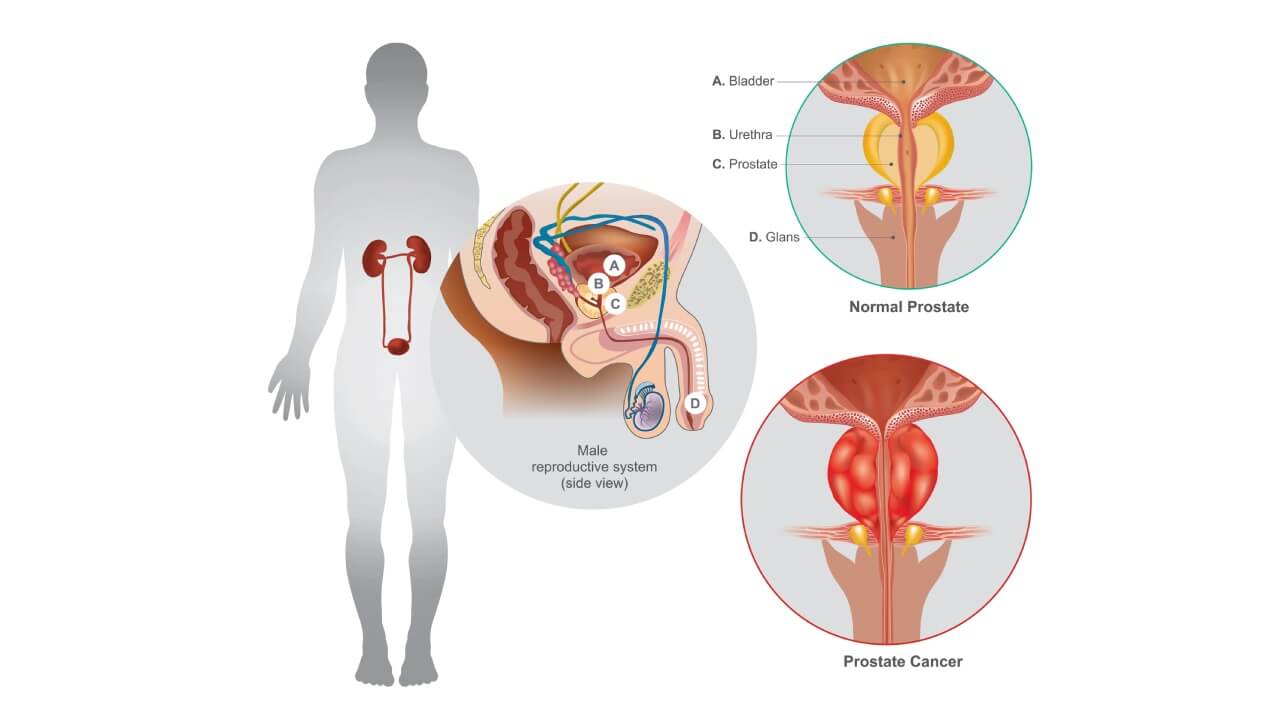
How Prostate Cancer Develops
Prostate cancer doesn’t appear rapidly一it develops through a series of steps. When crucial tumor‑suppressor genes like TP53 or PTEN are altered and the androgen‑receptor signaling pathway is disturbed, the disease gains momentum, driving both recurrence and progression. These genetic slip-ups allow prostate cells to evade cell-death signals and continue multiplying even when androgen levels are low.
Moreover, chronic inflammation, hormonal exposure, and oxidative stress can impair prostate tissue, setting the stage for the emergence and progression of cell clones. Over time, these altered cells proliferate, eventually forming a tumor that becomes clinically detectable. Today, innovative imaging — magnetic resonance imaging — enables visualization of these changes and aids in planning focal therapy strategies such as focal irreversible electroporation.
Pathophysiology of Prostate Cancer
At the microscopic level, prostate cancer cells have a high proliferative capacity, may also show reduced susceptibility to programmed cell death, and can exhibit angiogenic activity (the development of new blood vessels that supply the tumor with nutrients). These biologic changes can produce a favorable biologic environment, leading to tumor growth and suppression of immune responses. As the tumor grows, it compresses the urethra and surrounding prostatic tissue, producing a variety of urinary symptoms, such as urinary tract dysfunction or urinary retention.
Some patients, however, have an abnormal microarchitecture of the gland, which may place them in a more favorable condition for the development of urinary tract infections. The possibility of malignant tissue invasion provides an opportunity for capsular invasion with the development of metastases and recurrent disease in men, even after initially successful treatment. The biological significance of these mechanisms offers a theoretical rationale for the creation of certain antineoplastic procedures designed to selectively, yet minimally, destroy cancer cells while sparing nerves and blood vessels.
Principles of NanoKnife Treatment for Prostate Cancer
The NanoKnife system, which utilizes the principle of irreversible electroporation (IRE), is changing the face of the minimally invasive treatment of localized prostate cancer. Unlike traditional therapies using thermal ablation or radiation, IRE creates focal destruction of prostate cancer cells by delivering precise amounts of electrical energy to kill the cancer cells. This method will provide an ideal balance of cancer control and preservation of urinary and sexual function that is particularly well-suited for men who are looking for an organ-sparing treatment with minimal side effects.
Mechanism of Irreversible Electroporation
IRE is a method of delivering short high voltage pulses through two needles placed directly into the prostate under general anesthesia. The pulses generate "nanopores" in the membrane that disrupt it and lead to the death of the cells targeted by the electrical pulses. This method produces cancer cell death in the treated prostate area and maintains the architectural features of the prostate tissue (including vascular structures, connective tissue, etc.) [5].
The non-thermal nature of the NanoKnife system allows for the destruction of cancer cells within the treatment zone only and does not cause the “collateral” damage associated with high-intensity focused ultrasound or photodynamic therapy. Preservation of the extracellular matrix also promotes faster recovery and helps maintain both urinary continence and sexual function after the procedure.
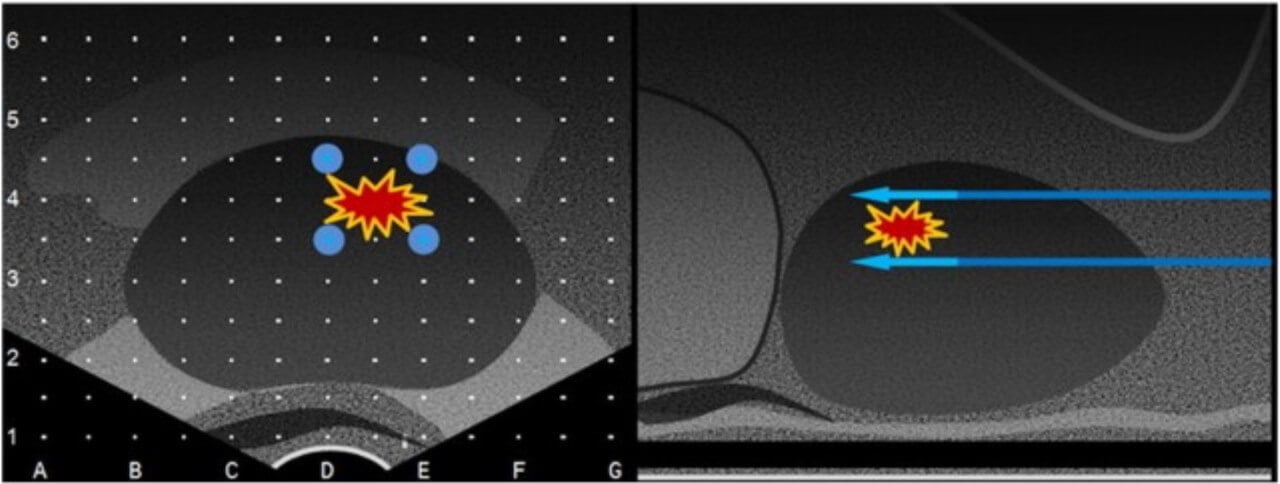
Technological Foundation of the NanoKnife System
The NanoKnife procedure uses a combination of real-time imaging (multiparametric MRI with ultrasound) to provide precise electrode placement into specific portions of the prostate for focal irreversible electroporation of visible tumor mass. The precision provided by this method allows for the treatment of all identified tumor locations and the preservation of all other prostate areas.
Because the NanoKnife treatment does not involve large incisions and because the procedure has an extremely low rate of blood loss, it is typically an outpatient procedure. Since the therapy is non-thermal, there is no possibility of tissue charring or coagulation due to heat一these factors could lead to poor postoperative outcomes.
This approach allows selective ablation of targeted prostate cells while preserving periprostatic nerves, which ensures excellent functional recovery in most prostate cancer patients.
Effectiveness of NanoKnife Prostate Cancer Treatment
The clinical effectiveness of the NanoKnife treatment for prostate cancer has been confirmed in numerous prospective and retrospective studies. The technique demonstrates promising results in achieving durable cancer control with minimal compromise of urinary and erectile function. By precisely ablating prostate cancer cells within the defined treatment zone, IRE effectively reduces the risk of prostate cancer recurrence while preserving vital structures necessary for normal urogenital performance.
Oncological Outcomes
Long-term outcomes of irreversible electroporation IRE have shown favorable local control rates comparable to conventional radical treatments. In patients with localized prostate cancer, the NanoKnife system achieves complete ablation of malignant regions with a low incidence of residual disease. Clinical data indicate that over 80–90% of treated prostate cancer patients remain recurrence-free in the first three years after initial irreversible electroporation treatment.
Importantly, IRE can also be effectively applied to recurrent prostate cancer after previous interventions such as external beam radiation or radical prostatectomy [6], providing a viable salvage therapy option. Because the NanoKnife approach does not rely on thermal damage, it minimizes fibrosis and maintains tissue elasticity, which supports better outcomes in subsequent interventions if prostate cancer recurrence occurs.
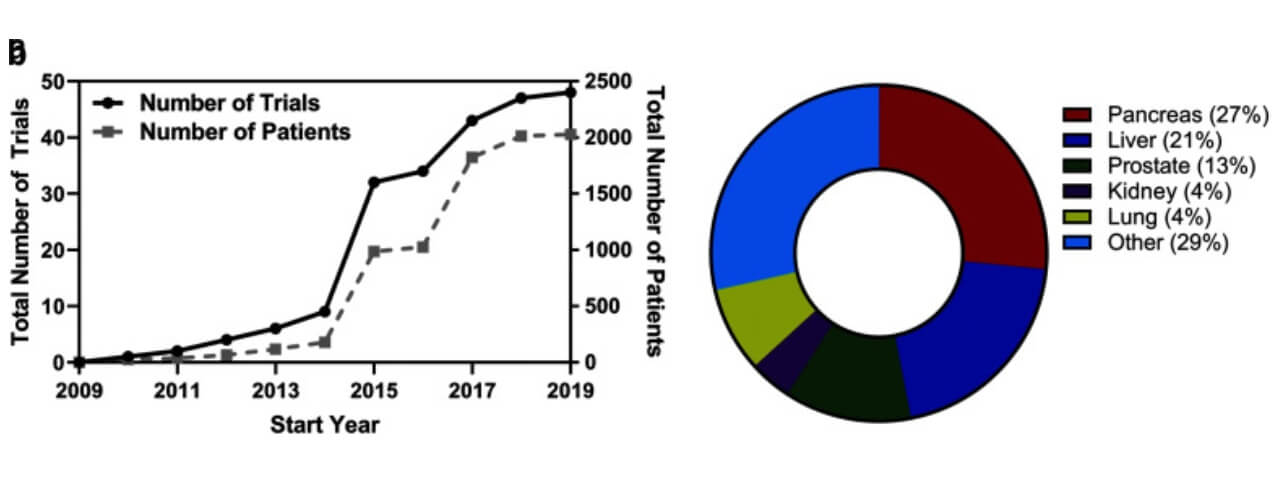
Functional Preservation and Quality of Life
IRE's greatest strength is in maintaining post-operative function. In most cases, men can regain normal urinating functions within days. Urinary dysfunction or urinary retention is less likely with IRE, when compared to other radical treatments for prostate cancer. Additionally, more than 85% of patients will experience continued sexual function, an unparalleled success rate as it relates to surgery or radiation therapy treatments for prostate cancer.
The NanoKnife method selectively destroys only the cancerous tissue while preserving both nerve and vascular networks critical to maintaining continence and sexual function. As such, the minimally invasive approach to treating cancer not only effectively treats the cancer itself, but also yields a significant improvement in a patient's post-treatment quality of life by enabling them to preserve sexual function and social activities faster.
Clinical Rationale and Safety Profile
From an overall clinical perspective, the first IRE (irreversible electroporation) treatment has shown high local efficacy in controlling both primary and recurrent prostate cancer. IRE can be especially useful for men with recurrent prostate cancer following radiation or surgical treatments who do not want to undergo further extensive therapies.
The vascular and connective structure that remains intact post-IRE will support the body's natural regenerative processes and significantly reduce the likelihood of complications related to urinary dysfunction, urinary tract infections, or urethral stricture.
Additionally, IRE does not damage surrounding tissues, which allows for the possibility of subsequent treatments if they are required一something that is typically not feasible following a radical prostatectomy or radiation therapy.
Overall, all of the above principles establish the NanoKnife IRE system as a novel and innovative method for addressing prostate cancer and achieving the current goals of oncologic precision and quality of life.
Indications for the Use of NanoKnife
Initially, the NanoKnife technology was primarily utilized on individuals with newly diagnosed localized prostate cancer. However, over the years, the NanoKnife technology's usage has broadened and now includes recurrent prostate cancer post-external beam radiation or additional local treatments. Today, focal irreversible electroporation IRE, using the NanoKnife 3.0 system, is predominantly utilized for early-stage tumors.
Below are the current indications for the use of the NanoKnife 3.0 system:
- Localized Prostate Cancer. Utilization of the NanoKnife System is ideally suited for those patients whose prostate cancer is confined to the prostate gland, without any indication of extracapsular invasion or systemic metastatic disease. In these instances, the NanoKnife System provides superior control of prostate cancer while simultaneously preserving urinary and sexual function.
- PSA levels < 15 ng/ml. Generally speaking, patients with low PSA levels tend to experience a greater response to NanoKnife treatment. This would likely indicate a smaller tumor burden and/or more favorable disease biology.
- Gleason Score ≤ 7. Moderate-grade prostate cancers are well-suited for this minimally invasive therapeutic modality, given the higher rate of success in achieving durable remission following initial IRE treatment.
- Single Tumor Focus. The presence of a single dominant lesion permits precise targeting and complete ablation of prostate cancer cells, while leaving healthy prostate tissue intact.
- Clinical Stages T1c-T2a. The technique is best-suited for small, organ-confined prostate cancers, which may be adequately treated by focal treatment techniques with minimal risk to adjacent tissues.
- Life Expectancy ≥ 10 Years. Candidates for the NanoKnife system should have an adequate life expectancy so that they may potentially benefit from the long-term oncologic effects of this minimally invasive outpatient procedure.
Individuals selecting the NanoKnife treatment approach must also agree to adhere to a regular schedule of follow-up care. The necessity for continued follow-up care cannot be overstated. Continuous prostate-specific antigen (PSA) monitoring and imaging assessments will provide an opportunity to identify any recurrent prostate cancer at the earliest possible stage. Under the close medical supervision of a qualified healthcare provider, patients may expect to enjoy an optimal quality of life, durable cancer control, and a reduced risk of complications associated with traditional treatment approaches.
To gain deeper insights into how advanced prostate cancer focal therapy, such as irreversible electroporation, is transforming prostate cancer management, we spoke with Prof. Stehling, one of the leading experts in this field.
Procedure and Patient Experience
The NanoKnife procedure for prostate cancer involves the use of precision targeting and offers a rapid recovery time. In most cases, the procedure is performed in a single session and does not appear to have a significant effect on the surrounding prostate tissue or on urinary and erectile functions. Below are the three main stages involved in this procedure.
Step 1: Pre-Procedure Assessment and Preparation
The patient undergoes a full diagnostic assessment (to identify tumor location, size, and stage) on the day before the procedure. This includes the use of multiparametric magnetic resonance imaging to better delineate which specific parts of the prostate contain cancer cells, thereby providing a much clearer image to precisely plan focal therapy. On the day of the procedure, a urinary catheter will be placed to prevent urinary retention post-surgery and to provide the patient with greater comfort during their immediate post-operative recovery phase. Proper preparation for irreversible electroporation is necessary to maximize both the success of the first treatment and the patient's safety.
Step 2: Probe Placement and Targeting
The NanoKnife operates using multiple thin "needle-like" probes placed into the prostate gland under general anesthesia. The number of probes is generally two to six, depending on the size and location of the tumor. A coordinate-guided metal stencil and real-time imaging, such as ultrasound or computed tomography, is used to accurately place the probes to target only the cancer cells. The precision is necessary to achieve focal ablation of malignant prostate segments and spare normal surrounding prostatic tissues and structures that are necessary for normal urinary and erectile function.
Step 3: Electrical Ablation and Recovery
After placement of probes, the system sends short bursts of high voltage that induce irreversible electroporation. The electroporation creates nanopores in the membrane of cancer cells, creating a disruption of cellular homeostasis that results in cell death. In contrast to thermal ablation, the surrounding tissues do not heat up, resulting in less risk of burn injuries. The treatment usually lasts between 40–60 minutes. The patients can recover faster and have less need for hospital stay, as this therapy is minimally invasive. Post-treatment, the patient will have restored urinary function and will preserve their erectile function, which improves their quality of life.
After the Completion of Treatment
After undergoing a NanoKnife procedure for prostate cancer, patients may feel some minor pain in their pelvic region and lower extremities. The reason for this is that they were under some degree of stress. For the most part, this type of pain will subside over several days and can be managed with mild pain relief medications prescribed by the healthcare provider. As an infrequent occurrence, patients might also experience minor hematuria (blood in the urine) or temporary difficulty when urinating. However, both of these conditions typically do not require further medical attention [7].
Patients should avoid heavy lifting or other strenuous activity for a couple of days after focal irreversible electroporation (FIRE). Most patients will only need to spend one night in the hospital. Patients will normally stay at the clinic for only a few hours before discharge. A follow-up examination to monitor the patient's recovery is usually scheduled for the next day.
A urinary catheter is placed for 2-5 days to help facilitate the patient's bladder function and to reduce the risk of urinary retention or urinary tract infections. While patients will normally report very little discomfort from the catheter, it will remain in place until normal urination has returned, and then the catheter is removed.
For most patients, all side effects associated with the NanoKnife procedure resolve by around two weeks post-treatment. Patients will be able to resume their normal daily routine, and many will return to work and other activities in 1-2 weeks, depending on their overall health.
Where Can You Undergo NanoKnife Cancer Treatment?
Germany offers NanoKnife prostate cancer treatment options for prostate cancer patients at any stage of their cancer, from localized (early-stage T1-T2) to locally advanced prostate cancers. Germany has one of the highest levels of medical technology, and many of the most experienced physicians in the field of minimally invasive treatments for prostate cancer, therefore makes it an attractive option for prostate cancer treatment abroad.
University Hospital Heidelberg was the first center in Germany to introduce NanoKnife treatment for patients with prostate cancer. Other centers throughout Germany have followed suit and are now using the NanoKnife system for treating prostate cancer with focal ablation of malignant prostate tissue. This gives patients who wish to avoid radical treatment options an opportunity to receive safe treatment.
Booking Health allows those interested in receiving NanoKnife treatment outside their home country to review a comprehensive list of clinics offering this therapy. The company assists in selecting the most appropriate clinic for each patient’s needs and provides travel arrangements, as well as up-to-date pricing for all aspects of treatment, including robotic surgery, external beam radiation, cryoablation, and photodynamic therapy. In addition to the above services, Booking Health can help patients reduce their overall treatment costs by eliminating additional charges associated with being treated as international patients.
Treatment in Germany with NanoKnife allows patients to work with the best experts in the world, and benefit from state-of-the-art minimally invasive outpatient treatments for their prostate cancer that target only the cancer cells, while minimizing damage to healthy tissue, urinary function, and erectile function.
| Response Rates | Duration of Therapy | Side Effects | Cost of Treatment in Germany | Cost of Treatment in USA | |
|---|---|---|---|---|---|
| NanoKnife Treatment | 70-85% (stages I and II); 40-55% (stage III); 25-35% (stage IV) | one-time procedure | Mild (brief discomfort, minimal tissue damage) | €35,300 - €38,900 | $70,000 - $100,000 |
| Radical Prostatectomy | Varies depending on cancer stage, individual patient factors, and overall health status | 2-4 hours (surgery) | Urinary incontinence, erectile dysfunction | €15,700 - €28,500 | Varies widely, but can reach up to $135,000, depending on the surgical method, hospital, and individual case factors |
| Radiation Therapy (External Beam) | 40-60% (stages I and II); 20-30% (stage III); less than 15% (stage IV) | up to months | Fatigue, skin irritation | €28,000 - €42,000 | $40,000 - $80,000 |
| Brachytherapy | Depends on cancer stage, tumor characteristics, and individual patient factors | from 30 minutes to a few hours | Urinary symptoms, erectile issues | €10,000 - €18,000 | Varies widely, typically ranging from $17,000 to over $50,000 depending on the type of treatment, facility, and whether it is combined with other therapies |
A Medical Journey: Every Step of the Way With Booking Health
Finding the best treatment strategy for your clinical situation is a challenging task. Being already exhausted from multiple treatment sessions, having consulted numerous specialists, and having tried various therapeutic interventions, you may be lost in all the information given by the doctors. In such a situation, it is easy to choose a first-hand option or to follow standardized therapeutic protocols with a long list of adverse effects instead of selecting highly specialized innovative treatment options.
To make an informed choice and get a personalized cancer management plan, which will be tailored to your specific clinical situation, consult medical experts at Booking Health. Being at the forefront of offering the latest medical innovations for already 12 years, Booking Health possesses solid expertise in creating complex management programs in each individual case. As a reputable company, Booking Health offers personalized treatment plans with direct clinic booking and full support at every stage, from organizational processes to assistance during treatment. We provide:
- Assessment and analysis of medical reports
- Development of the medical care program
- Selection of a suitable treatment location
- Preparation of medical documents and forwarding to a suitable clinic
- Preparatory consultations with clinicians for the development of medical care programs
- Expert advice during the hospital stay
- Follow-up care after the patient returns to their native country after completing the medical care program
- Taking care of formalities as part of the preparation for the medical care program
- Coordination and organization of the patient's stay in a foreign country
- Assistance with visas and tickets
- A personal coordinator and interpreter with 24/7 support
- Transparent budgeting with no hidden costs
Health is an invaluable aspect of our lives. Delegating management of something so fragile yet precious should be done only to experts with proven experience and a reputation. Booking Health is a trustworthy partner who assists you in pursuing stronger health and a better quality of life. Contact our medical consultant to learn more about the possibilities of personalized treatment with innovative methods and with leading specialists in this field.
Your Path to Treatment Success: Stories from Booking Health Patients
FAQ of our patients about NanoKnife for prostate cancer
Send request for treatmentThe success rate of NanoKnife for prostate cancer is high for localized tumors, with many studies reporting over 80–90% of patients remaining recurrence-free within the first three years after treatment. Functional outcomes, including preservation of urinary and erectile function, are also excellent.
While irreversible electroporation is highly effective for organ-confined tumors and focal therapy, the “most successful” treatment depends on disease stage and patient preference. Traditional radical treatments such as prostatectomy or radiation may offer complete cancer removal but with a higher risk of complications.
The main considerations for NanoKnife therapy include its current availability and the need for specialized centers. The mechanism of IRE for prostate cancer is based on precise non-thermal ablation which preserves nerves and surrounding tissues offering excellent functional outcomes while long-term data continue to accumulate.
Candidate selection for NanoKnife prostate typically includes patients with localized tumors, low to moderate Gleason scores, limited PSA levels and a life expectancy of over 10 years. Patients with prior radiation therapy or recurrence may also be considered for retreatment with NanoKnife for prostate cancer.
Choose treatment abroad and you will for sure get the best results!
Authors:
The article was edited by medical experts, board certified doctors Dr. Nadezhda Ivanisova and Dr. Bohdan Mykhalniuk. For the treatment of the conditions referred to in the article, you must consult a doctor; the information in the article is not intended for self-medication!
Our editorial policy, which details our commitment to accuracy and transparency, is available here. Click this link to review our policies.
Sources:
[1] Hyuna Sung, Jacques Ferlay, Rebecca L Siegel et al. Global Cancer Statistics 2020: GLOBOCAN Estimates of Incidence and Mortality Worldwide for 36 Cancers in 185 Countries. CA Cancer J Clin. 2021 May;71(3):209-249. doi: 10.3322/caac.21660. Epub 2021 Feb 4. [DOI] [PubMed]
[2] MaryBeth B Culp, Isabelle Soerjomataram, Jason A Efstathiou et al. Recent Global Patterns in Prostate Cancer Incidence and Mortality Rates. Eur Urol. 2020 Jan;77(1):38-52. doi: 10.1016/j.eururo.2019.08.005. Epub 2019 Sep 5. [DOI] [PubMed]
[3] Giorgio Gandaglia, Riccardo Leni, Freddie Bray et al. Epidemiology and Prevention of Prostate Cancer. Eur Urol Oncol. 2021 Dec;4(6):877-892. doi: 10.1016/j.euo.2021.09.006. Epub 2021 Oct 26. [DOI] [PubMed]
[4] Oskar Bergengren, Kelly R Pekala, Konstantina Matsoukas. 2022 Update on Prostate Cancer Epidemiology and Risk Factors—A Systematic Review. Eur Urol. Author manuscript; available in PMC: 2024 Aug 1. Published in final edited form as: Eur Urol. 2023 May 16;84(2):191–206. doi: 10.1016/j.eururo.2023.04.021. [DOI] [PMC free article]
[5] Massimo Valerio, Louise Dickinson, Afia Ali et al. A prospective development study investigating focal irreversible electroporation in men with localised prostate cancer: Nanoknife Electroporation Ablation Trial (NEAT). Contemp Clin Trials. 2014 Sep;39(1):57–65. doi: 10.1016/j.cct.2014.07.006. [DOI] [PMC free article]
[6] Kenneth N Aycock, Rafael V Davalos. Irreversible Electroporation: Background, Theory, and Review of Recent Developments in Clinical Oncology. Bioelectricity. 2019 Dec 12;1(4):214–234. doi: 10.1089/bioe.2019.0029. [DOI] [PMC free article]
[7] Mehmet Yilmaz, Mustafa Karaaslan, Mehmet Emin Şirin et al. Salvage irreversible electroporation for locally recurrent prostate cancer after definitive radiotherapy: a systematic review. Prostate Cancer Prostatic Dis. 2025 Sep;28(3):707-717. doi: 10.1038/s41391-024-00926-9. Epub 2024 Dec 2. [DOI] [PubMed]
Read:
A Comprehensive Guide to Getting Prostate Cancer Treatment
Stage 4 Prostate Cancer Treatment in Germany: What You Need to Know
Article menu:
- Understanding Prostate Cancer
- Principles of NanoKnife Treatment for Prostate Cancer
- Effectiveness of NanoKnife Prostate Cancer Treatment
- Indications for the Use of NanoKnife
- Procedure and Patient Experience
- After the Completion of Treatment
- Where Can You Undergo NanoKnife Cancer Treatment?
- A Medical Journey: Every Step of the Way With Booking Health
- FAQ of our patients about NanoKnife for prostate cancer
Don't know where to start?
Contact Booking Health
